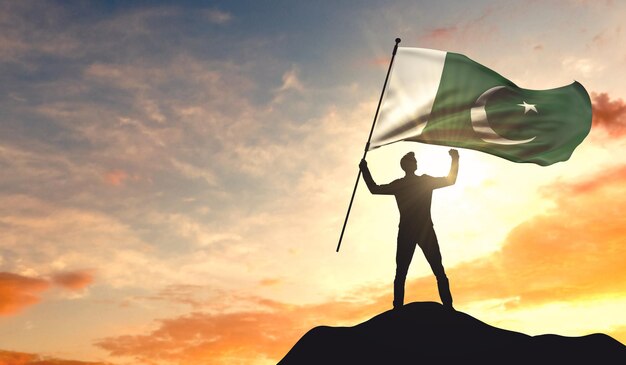Table of Contents
Introduction
The Independence Movement of Pakistan was a long and historic struggle by the Muslims of the Indian subcontinent to achieve a separate homeland. The movement lasted for nearly a century, from the War of Independence in 1857 to the creation of Pakistan on August 14, 1947. The movement was based on the Two-Nation Theory, which argued that Muslims and Hindus were distinct nations with their own cultures, traditions, and religions.
Under the leadership of Muhammad Ali Jinnah and the All-India Muslim League, Muslims fought politically, legally, and socially to secure their state. This movement was influenced by the decline of the Mughal Empire, British colonial rule, and Hindu-Muslim differences in British India.
Background of the Independence Movement
1. Decline of the Mughal Empire
Before British rule, India was dominated by the Mughal Empire (1526-1857), which was primarily a Muslim empire. However, by the early 18th century, the empire had weakened due to internal conflicts and external invasions. This decline allowed the British East India Company to expand its control over India.
2. British Rule in India
After the War of Independence in 1857, also known as the Indian Rebellion, the British crushed the revolt and officially took control of India, ending Mughal rule. India became a British colony, and Queen Victoria was declared the Empress of India in 1858.
Under British rule:
- Muslims were removed from administrative positions.
- English became the official language, replacing Persian.
- Muslim lands were confiscated, and economic conditions worsened.
3. Sir Syed Ahmed Khan and the Awakening of Muslims
- Sir Syed Ahmed Khan (1817-1898) realized that Muslims needed education and modern knowledge to regain their political influence.
- He founded the Aligarh Movement and established the Muhammadan Anglo-Oriental (MAO) College (later Aligarh Muslim University) in 1875 to educate Muslims.
- He promoted the Two-Nation Theory, arguing that Hindus and Muslims were separate communities.
Key Events in the Independence Movement
1. Formation of the Indian National Congress (1885)
- The Indian National Congress (INC) was formed by British officials and Indian leaders to demand political reforms.
- Initially, both Hindus and Muslims were part of the Congress.
- However, over time, it became clear that the Congress primarily represented Hindu interests, making Muslims feel politically marginalized.
2. Formation of the All India Muslim League (1906)
- In response to growing Hindu dominance, Muslims formed their own political party, the All India Muslim League, in Dhaka in 1906.
- Its aim was to protect Muslim rights and promote their political representation.
- Nawab Salimullah, Aga Khan, and Sir Syed’s followers played key roles in its formation.
3. Lucknow Pact (1916) – Hindu-Muslim Cooperation
- The Muslim League and Congress briefly worked together against British rule in the Lucknow Pact of 1916.
- It allowed separate electorates for Muslims, ensuring their political representation.
- However, this cooperation ended when Congress adopted policies that ignored Muslim interests.
4. Khilafat Movement (1919-1924)
- The Khilafat Movement was launched to protest the British abolition of the Ottoman Caliphate after World War I.
- Maulana Muhammad Ali and Maulana Shaukat Ali led the movement.
- Although it failed, it increased political awareness among Muslims.
5. Jinnah’s 14 Points (1929)
- In response to the Nehru Report (1928), which ignored Muslim demands, Muhammad Ali Jinnah presented his Fourteen Points in 1929.
- These points demanded Muslim autonomy, religious freedom, and political rights.
- This became the basis for the Muslim League’s future demands.
6. Lahore Resolution (1940) – Demand for Pakistan
- On March 23, 1940, during the Lahore Session of the Muslim League, the Lahore Resolution (also called the Pakistan Resolution) was passed.
- It demanded separate Muslim-majority states in British India.
- This was the first official step towards the creation of Pakistan.
7. 1945-46 Elections – Muslim League’s Victory
- In the 1945-46 elections, the Muslim League won almost all Muslim seats, proving that Muslims supported the demand for Pakistan.
- This strengthened Jinnah’s position in negotiations with the British and Congress.
8. Direct Action Day (August 16, 1946)
- Jinnah declared Direct Action Day to demonstrate Muslim unity.
- Communal riots erupted, proving that Hindu-Muslim unity was impossible.
- This made partition inevitable.
9. Mountbatten Plan (June 3, 1947)
- The British government, led by Lord Mountbatten, announced the partition of India.
- The Indian Independence Act was passed on July 18, 1947.
- India and Pakistan were to become two separate nations.
Creation of Pakistan – August 14, 1947
- On August 14, 1947, Pakistan was officially created as an independent state.
- Muhammad Ali Jinnah became the first Governor-General of Pakistan.
- Liaquat Ali Khan became the first Prime Minister.
- India gained independence on August 15, 1947.
Challenges at Independence
- Mass Migration: Millions of Muslims migrated to Pakistan, and millions of Hindus and Sikhs moved to India.
- Communal Violence: Partition led to riots and massacres, with over one million people killed.
- Economic Crisis: Pakistan received only 17.5% of India’s financial resources.
- Administrative Challenges: Pakistan had to build a new government, army, and institutions from scratch.
Significance of the Independence Movement
- The creation of Pakistan was the first major success of the Two-Nation Theory.
- It proved that a determined political movement could change history.
- Pakistan remains an important symbol of Muslim identity and independence.
Conclusion
The Independence Movement of Pakistan (1857-1947) was a long and difficult struggle that ended with the creation of Pakistan on August 14, 1947. Led by Muhammad Ali Jinnah, the Muslim League, and millions of dedicated Muslims, the movement overcame numerous challenges to achieve its goal. The creation of Pakistan was a historic victory for the Muslim community, securing their religious, cultural, and political identity.

